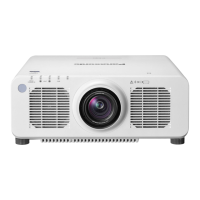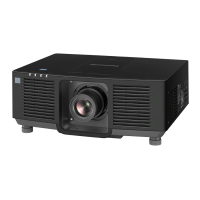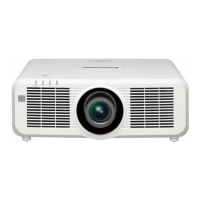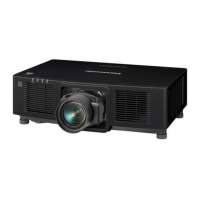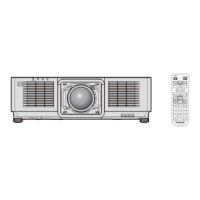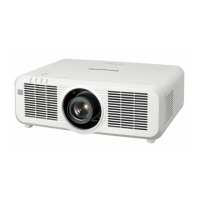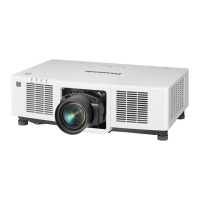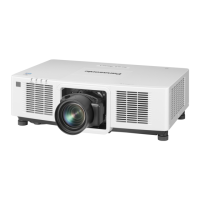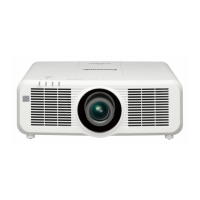Chapter 2 Getting Started — Connecting
52 - ENGLISH
<HDMI 1 IN> terminal/<HDMI 2 IN> terminal pin assignments and signal names
Outside view Pin No. Signal name Pin No. Signal name
Even-numbered pins of (2) to (18)
(1) (19)
(2) (18)
Odd-numbered pins of (1) to (19)
(1) T.M.D.S data 2+ (11) T.M.D.S clock shield
(2) T.M.D.S data 2 shield (12) T.M.D.S clock
-
(3) T.M.D.S data 2
-
(13) CEC
(4) T.M.D.S data 1+ (14) ―
(5) T.M.D.S data 1 shield (15) SCL
(6) T.M.D.S data 1
-
(16) SDA
(7) T.M.D.S data 0+ (17)
DDC/CEC
GND
(8) T.M.D.S data 0 shield (18) +5 V
(9) T.M.D.S data 0
-
(19) Hot plug detection
(10) T.M.D.S clock+
Connecting example: AV equipment
Audio device
VCR
(with built-in TBC)
Blu-ray disc player
Attention
f Be sure to use one of the following when connecting a VCR.
g Use a VCR with built-in time base corrector (TBC).
g Use a time base corrector (TBC) between the projector and the VCR.
f The image may be disrupted when nonstandard burst signal is connected. In such a case, connect the time base corrector (TBC) between
the projector and the external devices.
Note
f For the HDMI cable, use an HDMI High Speed cable that conforms to the HDMI standards. If a cable that does not conform to the HDMI
standards is used, images may be interrupted or may not be projected.
f The <HDMI 1 IN>/<HDMI 2 IN> terminals can be connected to an external device with the DVI-D terminal by using an HDMI/DVI conversion
cable. However, this may not function properly for some external devices, and image may not be projected.
f The projector does not support VIERA Link (HDMI).
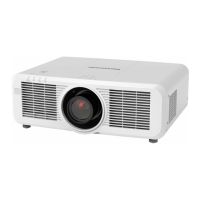
